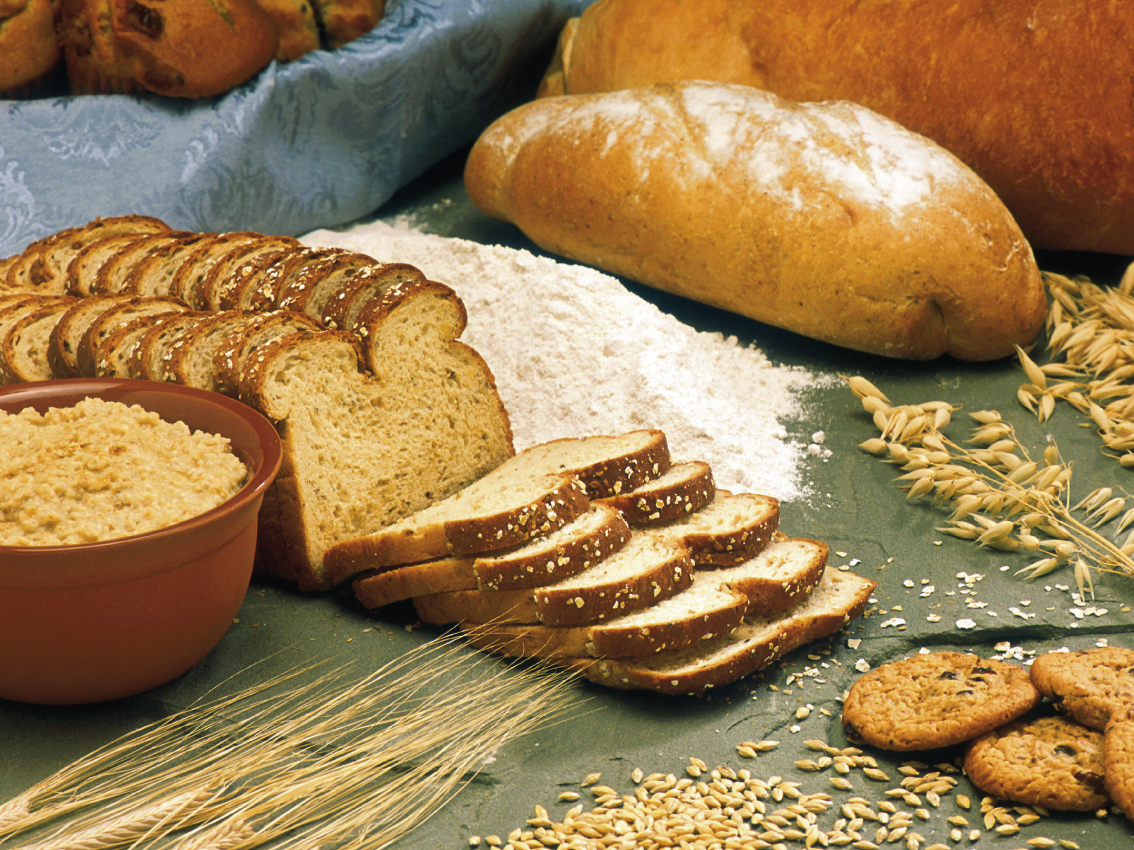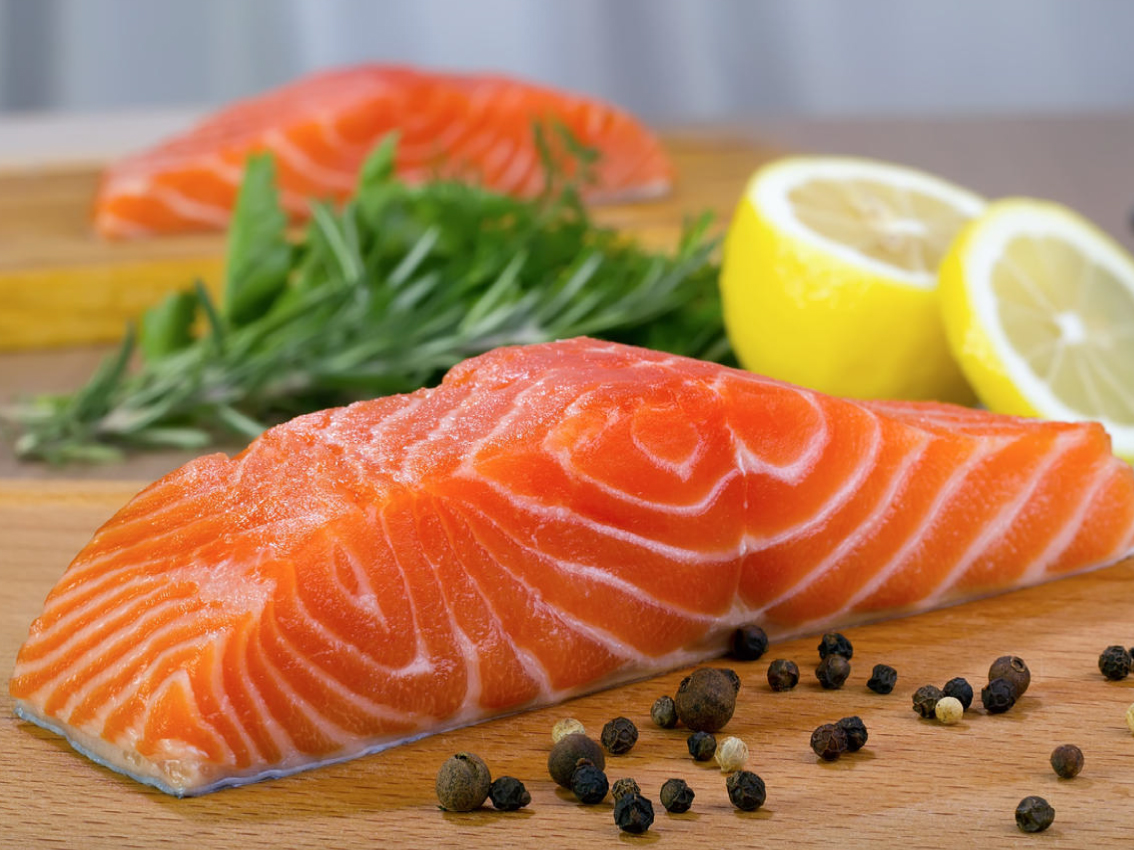What is a healthy breastfeeding diet?

When I first started working with newborns and families, back in 1994, there wasn’t as much of a focus on the breastfeeding diet as there is today. Over the decades the messages from lactation professionals has been, ‘The ideal diet for a breastfeeding woman is simply the healthiest one for all human beings and this is defined by the terms varied, balanced, and natural.’ However, time and time again, over many years now, clinical research has shown that the breastfeeding diet does need to be critiqued beyond the ‘healthiest one for all humans.'1 Not only for a mother’s overall health, but for the baby’s nutritional intake, comfortability and physical and mental development. Many parents already thankfully know this. Unfortunately though, many are only finding this out as they try to find the answers to their child’s discomfort and unsettled behaviour, even though this information is not new, and it is paramount for the health of their baby.
Thankfully, the studies available are finally changing this outdated message from lactation professionals worldwide. In my opinion, that’s a huge leap forward for our baby’s health. Now we just need to work at spreading the information wide and far so parents can be informed before baby arrives. The more we can work with preventative measures the better – something I am deeply committed to in my work. Enough said though, let's get into the big questions…
What is a healthy breastfeeding diet and why?
We can break this information down into a simple, daily holistic list that will be healthy for the majority of newborns. Do be aware though that some babies that have a more sensitive digestive tract may need to simplify this list even further.
- Two carbohydrates a day e.g. bread, rice, pasta,
- Two vegetables a day that are known to be windy vegetables. These are often of the green variety, and in moderation are a healthy choice for the breastfeeding diet e.g. broccoli, peas, lettuce (see full list below)

- Fruit and vegetables that do not generally effect baby’s digestive tract (see the ‘safe food’ list below). I say generally because some newborns may be allergic to some of these.
- Meat and fish
- Water – one 8oz glass each time you breastfeed and then sup throughout the day
- Ideally no dairy, or for the mother’s mental health, very little dairy
- No soy products – this interferes with hormone production and you can read more about this here
- No acidic foods like tomato, acid dressings, oranges (you can have lemons because they alkaline in the stomach).
Additional guidelines to consider within the list above are the foods that the parents may be reactive too. For example, if carbohydrates slow down your digestive system to the point of discomfort and baby is still a little unsettled when you are offering Bio-logical Care and feeding two carbohydrates a day, then try reducing this to one and see what happens – all the time increasing your intake of ‘safe foods’. Another is allergic reactions. Again, if you are offering Bio-logical Care and consuming the above list but baby is still unsettled, it can be helpful to ask for allergy tests.
Carbohydrates
As you may know all carbohydrates that we consume are converted to sugar. Sugar is needed for energy, calories, brain development and bacteria. Newborns gain this from your foremilk, which is made up of a high percentage of lactose (sugar) and from the foods you eat. However, when baby receives high levels of sugar, whether it’s by the mother’s diet, and/or being fed off both sides at each feed (which I don’t generally recommend from a digestive health perspective for the baby but do sometimes advise if they mother wants to maintain breastfeeding and has low supply on one breast) then this overload of sugar can place them on a sugar high, which can contribute to unsettled sleep.

The excess sugar also leads to more gas being produced in the duodenum, which then has to travel through the intestine and bowel, causing discomfort, green bowel motions, explosive motions, pedalling legs, arching backwards, erratic feeding, a baby that looks to suck a lot (often being mistaken for hunger) and short sleep cycles. Limiting your carbohydrate intake to two servings a day can contribute to a reduction, or cessation of these behaviours, depending on what other digestive imbalances are occurring for bubs.
Windy foods
There are many vegetables available that cause gas in the digestive tract, which for us adults is largely handled quite easily. But for a baby’s system that is just learning how to digest food in this manner, and what that actually feels like, excess gas can create considerable discomfort whether it’s caused from to many carbohydrates, sugar, lactose overload, or too many windy vegetables being consumed within the breastfeeding diet. Thus limiting your windy foods can make a considerably difference to sleep, arching backwards, pedalling legs, bopping on and off the breast when feeding and explosive bowel motions.
No dairy
Fact – when firstborn we all struggle to break down dairy, or if we look a little closer, it’s the alpha casein and whey in dairy that we struggle to absorb appropriately for the first year of life. After this, a child’s digestive tract has matured enough to start slowly drip feeding dairy into their diet. It’s not that we are born lacking, or that this makes us deficient in anyway, it’s just the way we are all born.
Depending on the amount of dairy being consumed, we can also struggle to break down the fat in dairy, which can lead to seed like deposits in the bowel motions (they look a little like sesame seeds). Over the years that I have studied dairy being taken out of the diet, these seed like deposits have disappeared. After consulting with some trusted doctor colleagues of mine, we believe these are from the overload of fat the baby has when dairy is in the breastfeeding diet and we are looking to get this tested. These fat globules are not meant to travel through the intestines at all and again, will contribute to the newborn feeling uncomfortable and unsettled.
By avoiding dairy in your diet, while consuming more calcium enriched vegetables and fruit from the ‘safe food list’, your baby will be a lot calmer!
Safe foods
These are going to be your healthy options for every meal and snack. Think about what you can add from this list below at each meal to boost the nutrients your body requires for breastfeeding and health.
Meat and fish
These two food groups are rich in protein and will boost your health, and the health of your baby, no end. Meat has a good amount of vitamin B12 and iron, great for boosting energy levels, and grass fed beef, and fish, contain omega 6 and 3-fats, which are highly important for regulating blood pressure, inflammatory responses, growth and brain development. During a recent training course I attended through Gold Learning by Laurel Wilson, (IBCLC, CLE, CCCE, CLD) I learnt that omega 3 and 6 in human milk are strongly influenced by the pregnant and postnatal diet.2 After digging a little deeper into this I learnt that omega 3 in the diet is essential for a healthy amount of eicosapentaenoic acid (EPA), which aids those inflammatory responses, and docosahexaenoic acid (DHA) which does a fabulous job at making membranes a lot more fluid, especially those that are connecting and developing in the brain in the first 1,000 days of life.
DHA is the major polyunsaturated fatty acid contained in the human brain and retinal rods and, thus, is essential for brain and retinal development of the fetus during pregnancy. In fact, DHA plays major roles in the psychomotor neurodevelopment in the first months of life, when it is supplied at high amounts by breastmilk.2 The benefits of DHA for the fetus and for the infant are supported by an extensive literature that confirms the importance of appropriate omega-3 intake for maternal health (to reduce the risk of premature birth and post-partum depression), for the composition of breastmilk, and for overall infant health.3,4,5

The DHA requirement increases to 100–200 mg per day during pregnancy and lactation, based on studies that have shown the association between increase in the content of DHA in breastmilk and a better overall health status of the infant, especially in terms of visual acuity and cognitive development.6 The consumption of two servings of fish per week allows achieving the adequate DHA content in breastmilk.7
Healthy food list
Carbohydrates
- pasta, amaranth (very easy on a baby’s digestive system and highly recommended), brown rice, whole grain cereals (with 3 grams of fiber and less than 10 grams of sugar per serve), orzo, buckwheat (can cause gas for some).
- sourdough bread (a healthier option compared to white or brown bread, which you can also have), refined flours, cakes and biscuits (but dairy free)
- green peas (low windy food), white potatoes (cook these the day before you eat them to eliminate the starch component if you would like them, but have had your quota of carbohydrates for that day) sweet potato (more nutritional than white potato and easy on the digestive tract for bubs)
- banana, apples, small handful of grapes, mango
Windy foods
Brussel sprouts, peas, spinach, bok choy, kale, broccoli, swiss chard, lettuce, artichokes, asparagus, water cress, leeks, carrots, turnips, garlic (although this causes low wind so for the majority of baby’s you can have this plus two windy foods) yeast, sweet melons, rhubarb, cashew nuts, coconut (some baby’s have more gas on coconut) and sugar intake. Peanut butter, or a handful of peanuts for most breastfeeding mothers are fine however, they can also be hard to digest for some people, causing abdominal discomfort or more gas, bloating and diarrhoea. So, you can either err on the side of caution and avoid them altogether, or monitor your baby's behaviour and bowel motions when you do have them. The other circumstance that peanuts are not good is obviously when there is an allergy but this won't be known unfortunately until you try them.
Meat and fish
Grass fed beef, chicken, chicken livers, chicken kidneys, pork, bacon, venison, duck, salmon, sardines, and pilchards, white fish (like cod and haddock), fresh tuna (canned tuna does not have omega 3 as it’s destroyed in processing according to the Public Health Agency).
Other Safe Foods
You can eat the following foods while still being aware of the above guidelines...
Eggs (unless like any of these foods an allergy exists). I recommend you boil a few of these at the start of the day to eat as snacks throughout the day and night feeds. Melon, apricots (one stone fruit a day is okay for most baby’s, but do stop having it if baby is upset), peaches, fresh pineapple (high in sugar so only a half of a 1 cm slice) nectarines, plums, papaya, pears (easier on system when peeled), apples (easier on system when peeled) cranberries, cantaloupe, cherries (5 a day) and grapes (5 a day).

Parsley, basil, alpha sprouts, corn, avocado, butternut squash, pumpkin, beetroot, okra, brazil nuts, almonds, sunflower seeds, pumpkin seeds, popcorn, rice and almond milk (only a little of these for the commercial brands as they are high in sugar but you can make your own), an oil spread to replace butter, coconut oil and milk, and drinking plain chicken broth can offer great sustenance throughout the day (not cooked with onions or any food on the avid list).
Foods to avoid
All dairy, spicy food, acidic foods (oranges or any fruit juices, acidic dressings, tomatoes, lemons etc), caffeine, strawberries, dried fruit, citrus fruit, mint, alcohol (unless you are going to have your alcohol after a breastfeed and then pump and dump the next feed), coriander, carbonated drinks, powdered yeast, dried beans, canned beans, cucumbers, onions, all capsicums, celery, cabbage, cauliflower, radish, shark, swordfish, tilefish and king mackerel.
Diet tips
- If baby is upset from a food then this will generally show itself on the second 3 ½ hour to 4 hourly feed after you have consumed the food. For example, you ate a high sugar breakfast, this would then show up with unsettled behaviours after lunch, when the waste from the breakfast breastfeed would begin to travel through the intestines and onto the bowel.
- Because of the effects of sleep deprivation it can be handy to keep a food dairy, either by using one of the many baby recording apps on the market, or by pen and paper.
- You may find it beneficial to slot another small lunch into your day.
- And since this is also about mental health for our breastfeeding mothers, if you can’t do without your chocolate then a couple of squares of Whittakers Dark Ghana Chocolate a day is fine, because of the way it's made.
- http://www.llli.org/nb/nbmarapr04p44.html
- Marangoni F, Cetin I, Verduci E, Canzone G, Giovannini M, Scollo P, Corsello G, Poli A. Maternal Diet and Nutrient Requirements in Pregnancy and Breastfeeding. An Italian Consensus Document. Nutrients 2016 Oct; 8(10): 629
- Lauritzen L., Carlson S.E. Maternal fatty acid status during pregnancy and lactation and relation to newborn and infant status. Child Nutr. 2011;7:S41–S58. doi: 10.1111/j.1740-8709.2011.00303.x.
- Sallis H., Steer C., Paternoster L., Davey Smith G., Evans J. Perinatal depression and omega-3 fatty acids: A Mendelian randomisation study. Affect. Disord. 2014;166:124–131. doi: 10.1016/j.jad.2014.04.077.
- Mennitti L.V., Oliveira J.L., Morais C.A., Estadella D., Oyama L.M., Oller do Nascimento C.M., Pisani L.P. Type of fatty acids in maternal diets during pregnancy and/or lactation and metabolic consequences of the offspring. Nutr. Biochem. 2015;26:99–111. doi: 10.1016/j.jnutbio.2014.10.001.
- Società di Nutrizione Umana (SINU) LARN—Livelli di Assunzione di Riferimento di Nutrienti ed Energia per la Popolazione Italiana.SICS; Milano, Italy: 2014. pp. 1–655. IV Revisione.
- Koletzko B., Cetin I., Brenna J.T. Dietary fat intakes for pregnant and lactating women. Br. J. Nutr. 2007;98:873–877. doi: 10.1017/S0007114507764747.





